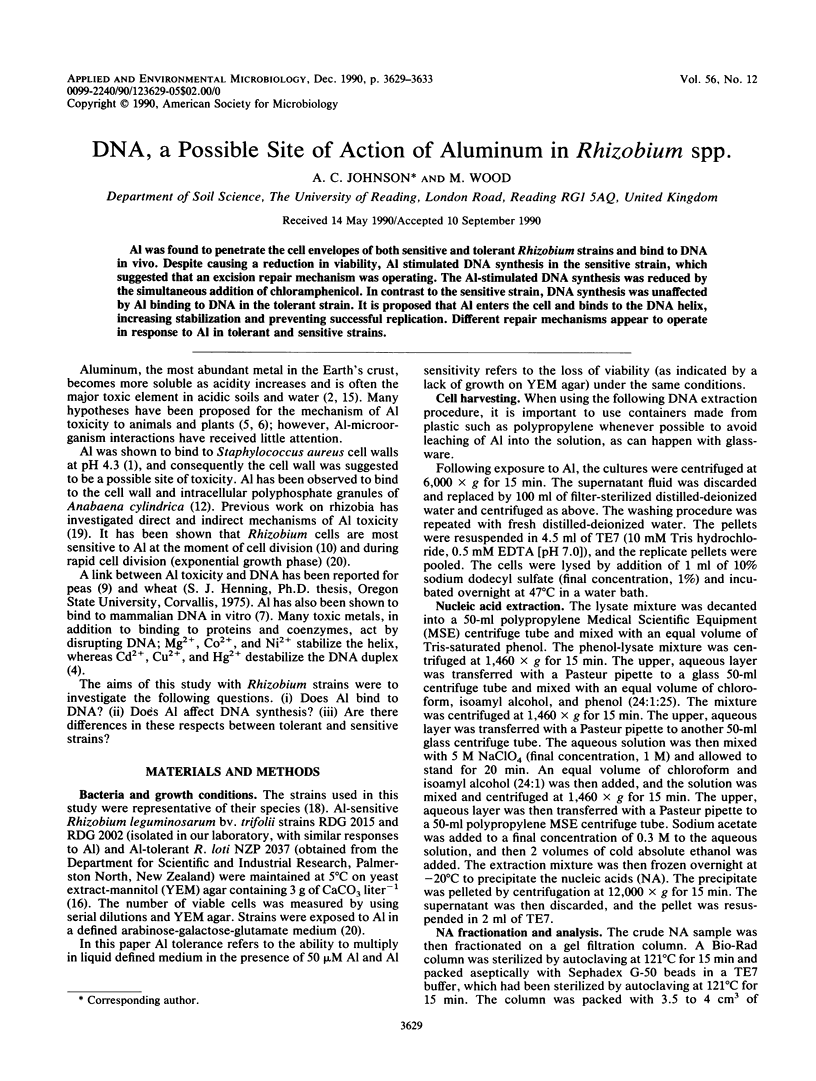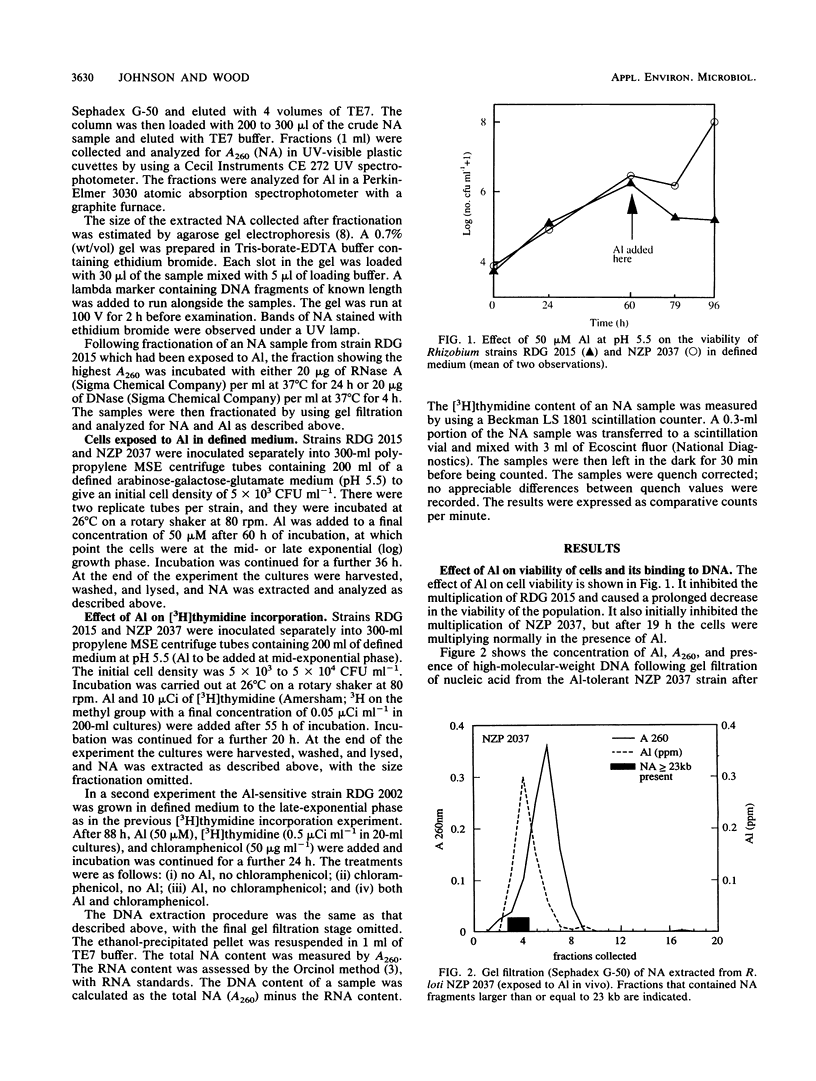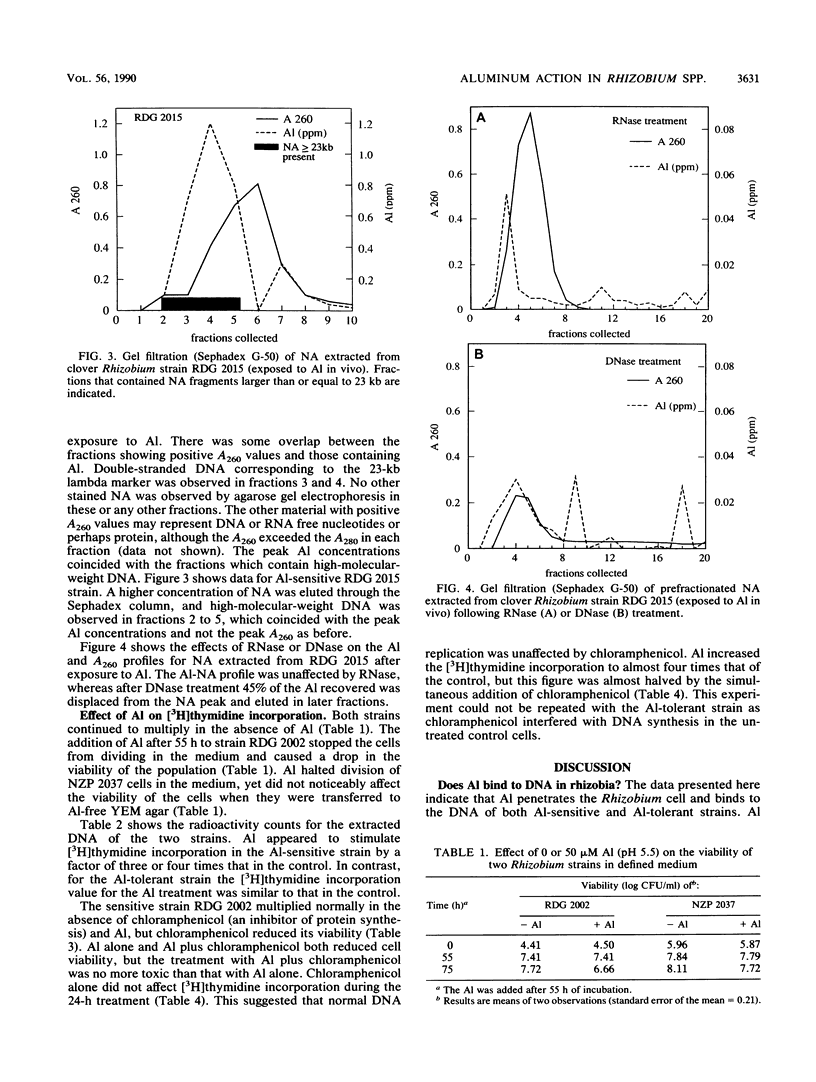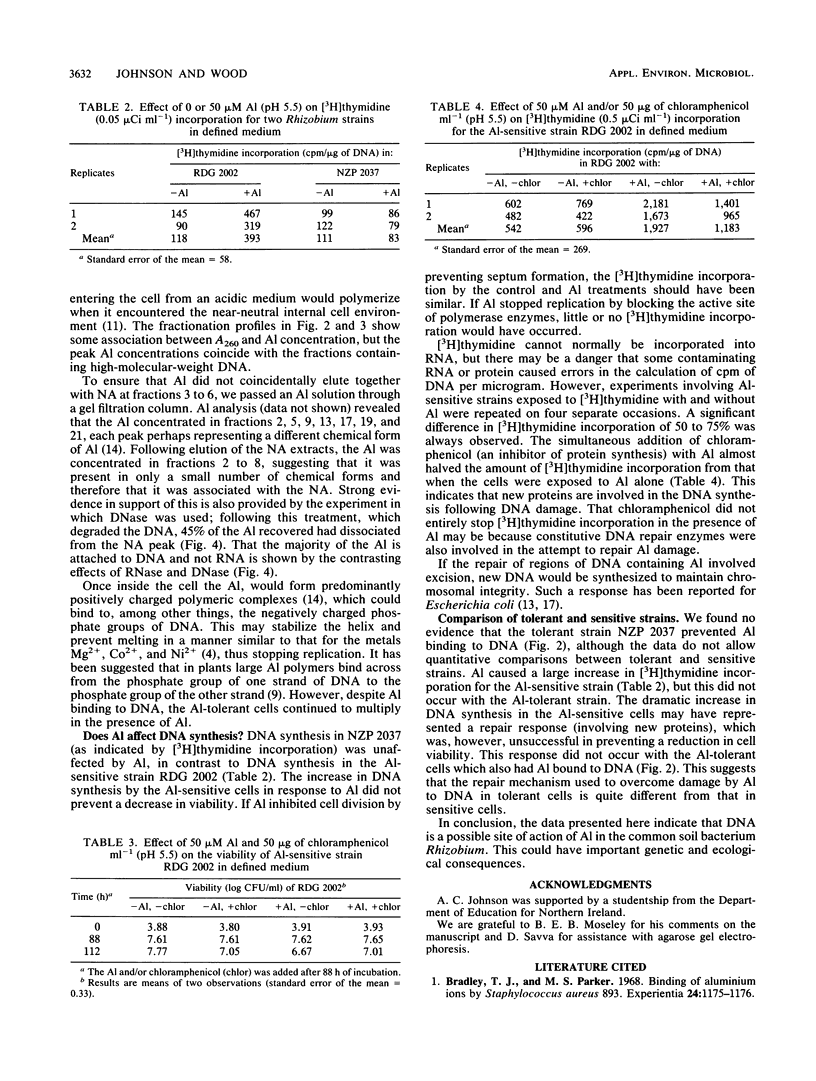Abstract
Al was found to penetrate the cell envelopes of both sensitive and tolerant Rhizobium strains and bind to DNA in vivo. Despite causing a reduction in viability, Al stimulated DNA synthesis in the sensitive strain, which suggested that an excision repair mechanism was operating. The Al-stimulated DNA synthesis was reduced by the simultaneous addition of chloramphenicol. In contrast to the sensitive strain, DNA synthesis was unaffected by Al binding to DNA in the tolerant strain. It is proposed that Al enters the cell and binds to the DNA helix, increasing stabilization and preventing successful replication. Different repair mechanisms appear to operate in response to Al in tolerant and sensitive strains.
Full text
PDF




Selected References
These references are in PubMed. This may not be the complete list of references from this article.
- Bradley T. J., Parker M. S. Binding of aluminium ions by Staphylococcus aurens 893. Experientia. 1968 Nov 15;24(11):1175–1176. doi: 10.1007/BF02147837. [DOI] [PubMed] [Google Scholar]
- DISCHE Z. New color reactions for determination of sugars in polysaccharides. Methods Biochem Anal. 1955;2:313–358. doi: 10.1002/9780470110188.ch11. [DOI] [PubMed] [Google Scholar]
- Eichhorn G. L., Shin Y. A. Interaction of metal ions with polynucleotides and related compounds. XII. The relative effect of various metal ions on DNA helicity. J Am Chem Soc. 1968 Dec 18;90(26):7323–7328. doi: 10.1021/ja01028a024. [DOI] [PubMed] [Google Scholar]
- Karlik S. J., Eichhorn G. L., Lewis P. N., Crapper D. R. Interaction of aluminum species with deoxyribonucleic acid. Biochemistry. 1980 Dec 23;19(26):5991–5998. doi: 10.1021/bi00567a008. [DOI] [PubMed] [Google Scholar]
- O'hara Graham W., Goss Thomas J., Dilworth Michael J., Glenn Andrew R. Maintenance of Intracellular pH and Acid Tolerance in Rhizobium meliloti. Appl Environ Microbiol. 1989 Aug;55(8):1870–1876. doi: 10.1128/aem.55.8.1870-1876.1989. [DOI] [PMC free article] [PubMed] [Google Scholar]
- Sancar A., Rupp W. D. A novel repair enzyme: UVRABC excision nuclease of Escherichia coli cuts a DNA strand on both sides of the damaged region. Cell. 1983 May;33(1):249–260. doi: 10.1016/0092-8674(83)90354-9. [DOI] [PubMed] [Google Scholar]
- Walker G. C. Inducible DNA repair systems. Annu Rev Biochem. 1985;54:425–457. doi: 10.1146/annurev.bi.54.070185.002233. [DOI] [PubMed] [Google Scholar]


